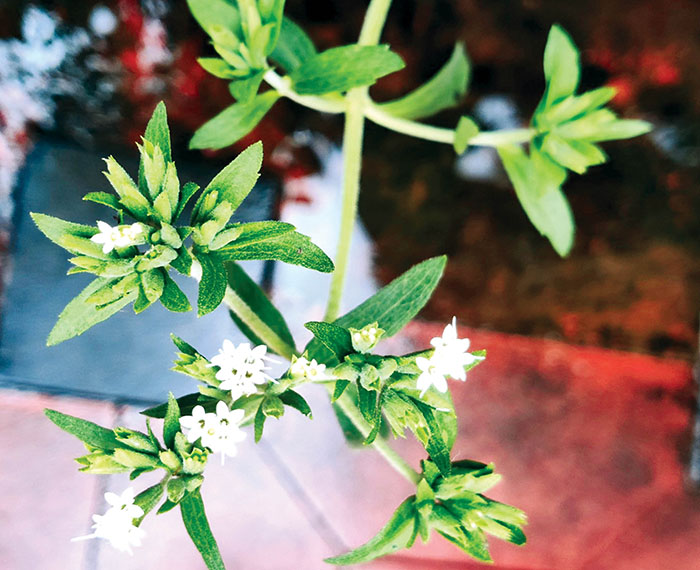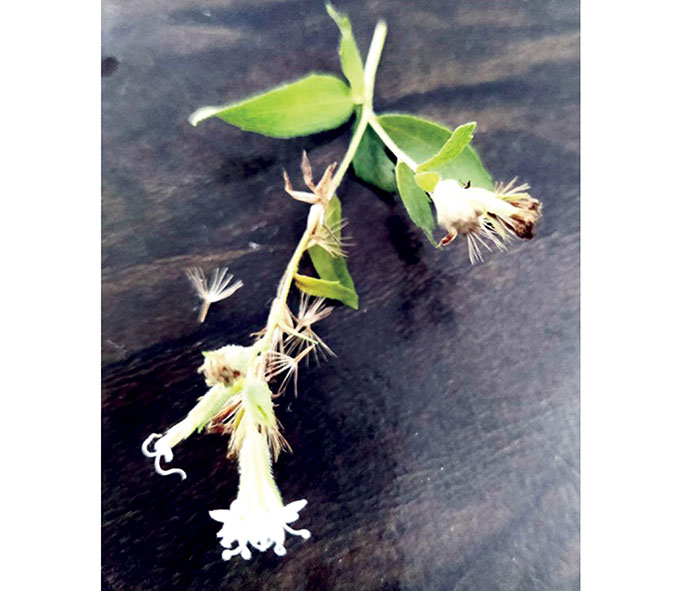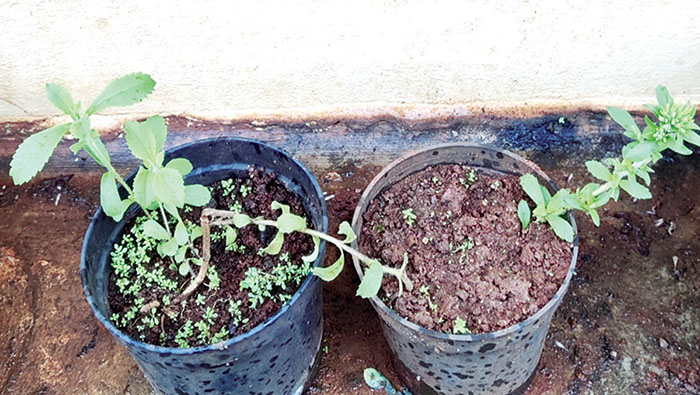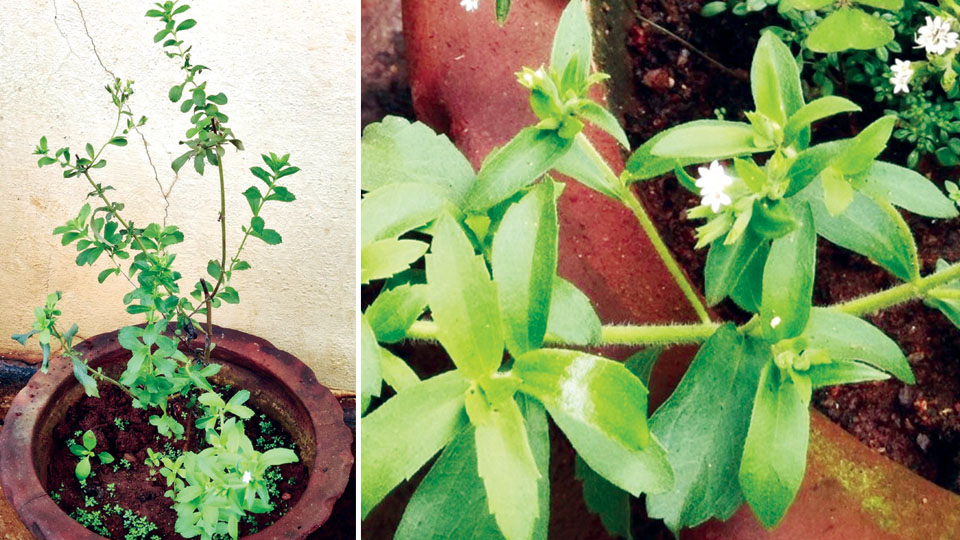Carbohydrates, the essential macronutrients, are part of our daily diet. All forms, whether simple or complex break down into glucose (aka blood sugar) before being assimilated in to our body. As is well-known their excessive presence in the blood is the cause for many ailments. More often than not it is a challenging task to keep watch on carbohydrates consumption to maintain sugar levels under control for people with diabetes. So also with those with sweet tooth with craving for sugars. Swapping artificial sweeteners may help but not all these sugars are calorie-free. They vary in terms of their impact on blood sugar. Even all the herbal sugars are not safe (e.g. xylitol). What next? Are there any safe sugar substitutes for diabetics. Yes, there are a few,
Monk fruit: Contains mogrosides, a type of antioxidant responsible for the sweet taste.
Stevia: The leaves contain sweet-tasting chemicals known as steviol glycosides.
Erythritol: A sugar alcohol derived from the fermentation of cornstarch or wheat.

My first recommended option is Stevia, which can be grown easily in home gardens. Leaves contain stevioside and rebaudioside (appx. 9.1% and 3.8%, respectively), which are responsible for the sweet taste. Credit goes to M. Bridel and R. Lavielle (1931) for the discovery who isolated these steviol glycosides which are 200 to 300 times or more sweeter than table sugar and non-glycemic. Leaves can be used fresh or dried to sweeten beverages or desserts and can be commercially processed into powdered non-caloric sweeteners, particularly the chemicals stevioside and rebaudioside. Touted as a healthier alternative to sugar, stevia sweeteners grew in popularity worldwide in the early 21st century. Nowadays, sweetener products generically known as stevia are sold under various trade names. Furthermore, they are approved by the US Food and Drug Administration (FDA) and the European Union, generally recognised as safe (GRAS).
Stevia rebaudiana is commonly known as Candyleaf, Sweetleaf, Sugarleaf, Cheeni-tulsi & Mou-tulasi (Assamese). The plant is native to parts of Brazil and Paraguay. Its use has a long history of more than 1,500 years. Traditionally, the plant was used to sweeten Yerba mate, Paraguay tea or Brazilian tea, a tea-like beverage, popular in many South American countries and it had a number of applications in folk medicine too. Its commercial cultivation began in 1960s and spread to Japan, Southeast Asia and US. It is also cultivated in Nepal and Himalayan regions of India and Assam.
Stevia is a small, erect, slender, perennial herb belonging to the Sunflower family Asteraceae. It grows to a height of 1-2 feet and often 2.5 feet. A rhizomatic plant with a shallow root system; Stem semi-woody, pubescent (hairy); Leaves with a prominent midrib, aromatic, 1 to 1.5 inch long, opposite (lined up against each other), faintly 3-veined with elongated leaf blades (lamina becoming gradually broader from the base, more broader towards the tip/ top end) with crenulated margin above the middle portion meaning the leaf margins are cut into small rounded teeth; Flowers small, white, non-fragrant, tubular, regular, borne in terminal clusters of 2-6 florets; 7-15 mm long, bisexual but self-incompatible; Corolla (petals) 5-6 lobed, with light purple accents; Stamens 5, connective of anthers ending in an oblong appendix; Pistils with 2-lobed style, curved at top; Fruit angular, spindle-shaped, glandulose achene with a crown of pappus of about 20 filiform scabrid setae; contain non-endospermic seeds. The plant flowers generously and in profusion.

Propagation methods & planting material
It is propagated by seeds, division of suckers, stem cuttings and tissue culture methods. Though the propagation through seeds is economically viable, the seed germination is difficult. Hence, plants are mostly grown from cuttings/ tissue culture methods. Furthermore, propagation through vegetative methods ensure uniform quality of produce. However, the cost of planting material is high.
For propagation from cuttings, mature stems of 10-15 cm length with 4-6 nodes are preferred. Lower leaves are trimmed and the cuttings planted in the seed bed by keeping one node inside the soil. Daily watering is necessary till root formation occurs as high humid conditions favour root development. It takes 10-15 days for roots to develop properly. Planting operations are carried out under partial shade. Well-rooted cuttings (hardened plants) are then transferred to beds filled with soil, sand and FYM mixture (1:1:1 ratio). The recommended spacing is 1.5 ft x 1.5 ft. The transplanted plant saplings need to be watered alternate days or as required to keep the soil moist.
Another easy method is layering — a technique in which roots develop on a stem while it is still attached to the parent plant. Bend a low growing, flexible mature stem to the soil and cover part of the stem with soil, leaving the remaining 6 to 12 inches above the soil. Wounding the lower side of the bent branch by removing a small portion of the skin (bark) may help quick rooting. Keep moist by watering daily. It may take nearly 4-6 weeks for a newly rooted layer to be removed for transplanting by separating it from the mother plant.

Useful tips
- Stevia is a short-day plant grown under tropical and sub-tropical conditions.
- The plant prefers warm and sunny weather.
- Well drained sandy loamy soil (pH range of 5.0-7.5) & wet humid conditions with reasonably good water holding capacity are favourable for good growth.
- Nutrient management is imperative as moderate level of nutrients are required for higher safe yield and quality. Therefore, organic manures and chemical fertilizers are applied to soil.
- Pinch terminal ends for increased branching and higher leaf production.
- Long day-length is helpful for higher leaf yield while short days promote blooming.
- The flowers are normally trimmed to improve the flavour of the leaves.
- Layering is the best method for multiplication for backyard / home gardening.
- A substitute for sugar Stevia is a non-nutritive sweetener meaning it has almost no calories and do not affect blood glucose levels.
- Safe consumption of steviol glycosides for humans is 4 mg/ kg body weight per day as recommended by JECFA (Joint Expert Committee on Food Additives).
- CSIR-Institute of Himalayan Bioresource Technology (CSIR-IHBT), Himachal Pradesh, has standardised agro-technology for commercial production of Stevia. Interested may contact the Institute for standardised package for commercial cultivation.
- Many brands of Stevia products (powders) are available in the market. However, during refining process a few other chemicals may get incorporated. In my view, the better option is to grow them in your backyard and use.
Text & photographs by Dr. Mahadeswara Swamy Scientist Mob: 97429-91057
e-mail: [email protected]








We should always keep learning in life and I will get to learn a lot from your post, your post is really appreciated, it is much less appreciated and I also like to write, if you can, then post my own post here. Give some space, it will be very kind of you.